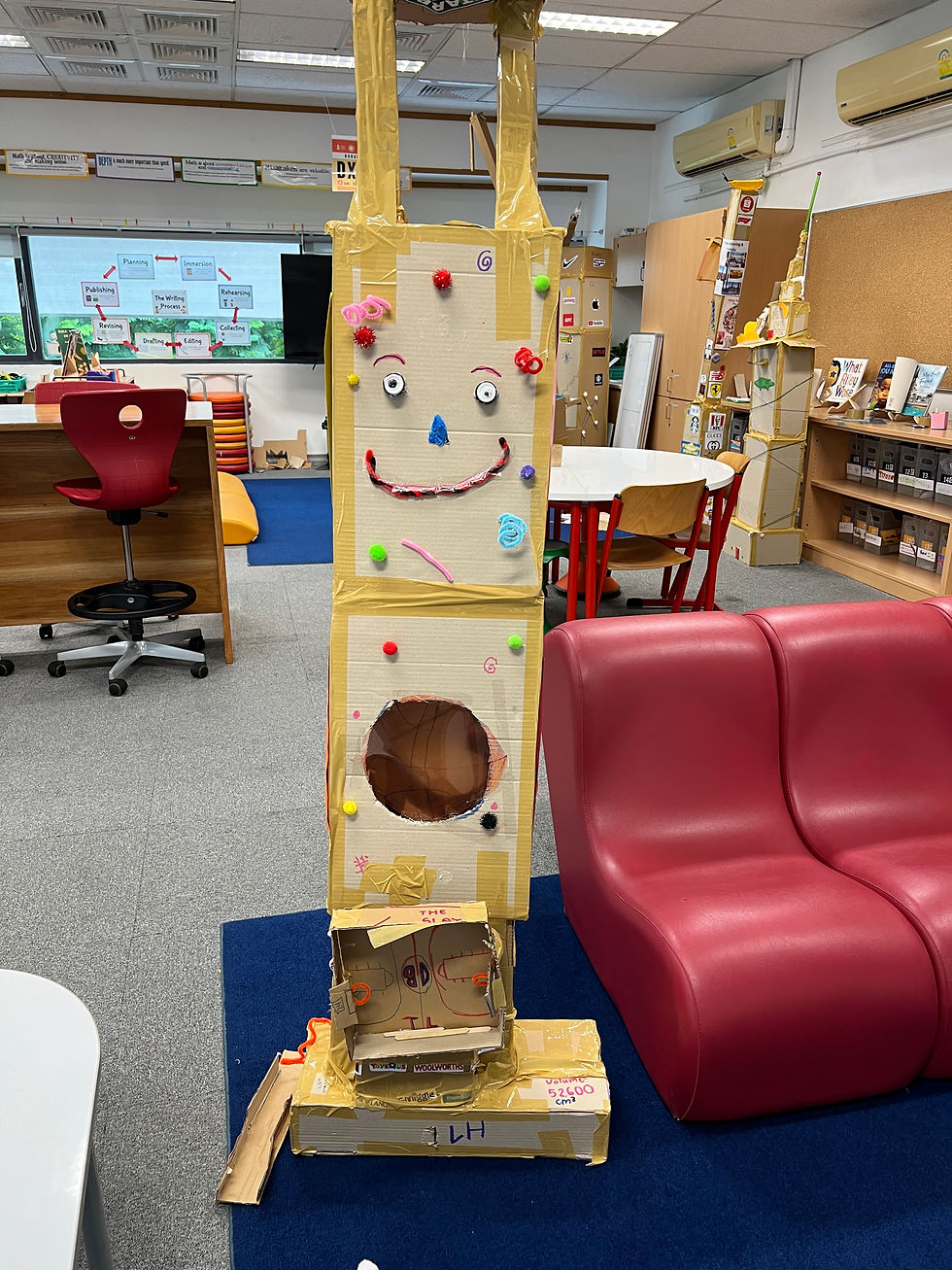Building Skyscrapers: Math, Design, and Collaboration in Grade 5
- markmarshall
- May 22, 2024
- 2 min read
I love design projects that have a purpose behind them. The annual Skyscraper Project in Grade 5 has been a favorite because it combines hands on making, creativity, and mathematics in a way that students find both challenging and fun.

Why Skyscrapers?
The unit is grounded in our math standards on measurement, area, and volume. But instead of learning these concepts in isolation, students use them as architects and engineers. The essential questions push them to think bigger:
How do the needs of a population affect the function and purpose of skyscrapers?
What do you notice about skyscrapers in big cities?
How do architects use area and volume in their designs?
The Power of Collaboration
I co designed this unit with Grade 5 teachers, and through the power of collaboration we have improved it each year. Like any design project, constraints are important. We give each team just two large pieces of cardboard and one roll of tape to work with. This forces students to make decisions, conserve resources, and solve problems together.
Students also create team agreements and set goals using the “6 Cs” — collaboration, communication, commitment, celebration, compromise, and contribution. These social learning goals are just as important as the math.

From Blueprints to Towers
The project unfolds in stages:
Research: Students explore skyscrapers in Bangkok and beyond, watching videos and discussing materials, shapes, and challenges of tall buildings.
Plan and Design: Each student drafts an initial sketch before the team combines ideas into a shared blueprint. They must calculate the dimensions, area, and volume of each prism they plan to use.
Prototype: Using paper, tape, and grid planning sheets, teams build scaled down versions before moving to full size construction.
Build: With cardboard, hot glue, and teamwork, skyscrapers rise taller than their teachers. Each building must be free standing and include at least three prisms.
Exhibit: The final skyscrapers are displayed in a showcase where parents, teachers, and peers stroll through a miniature cityscape created by Grade 5.



Why It Works
This project is more than math practice. Students see that mathematics is a tool for solving real design problems. They also practice communication, compromise, and perseverance as they work through challenges with limited resources. And in the end, they get to stand proudly beside a skyscraper that they designed and built.
The annual showcase has become a highlight of the year. Walking through the hallway full of student designed towers, you can feel the excitement and pride. The skyscrapers may be made of cardboard, but the learning is built to last.







Comments